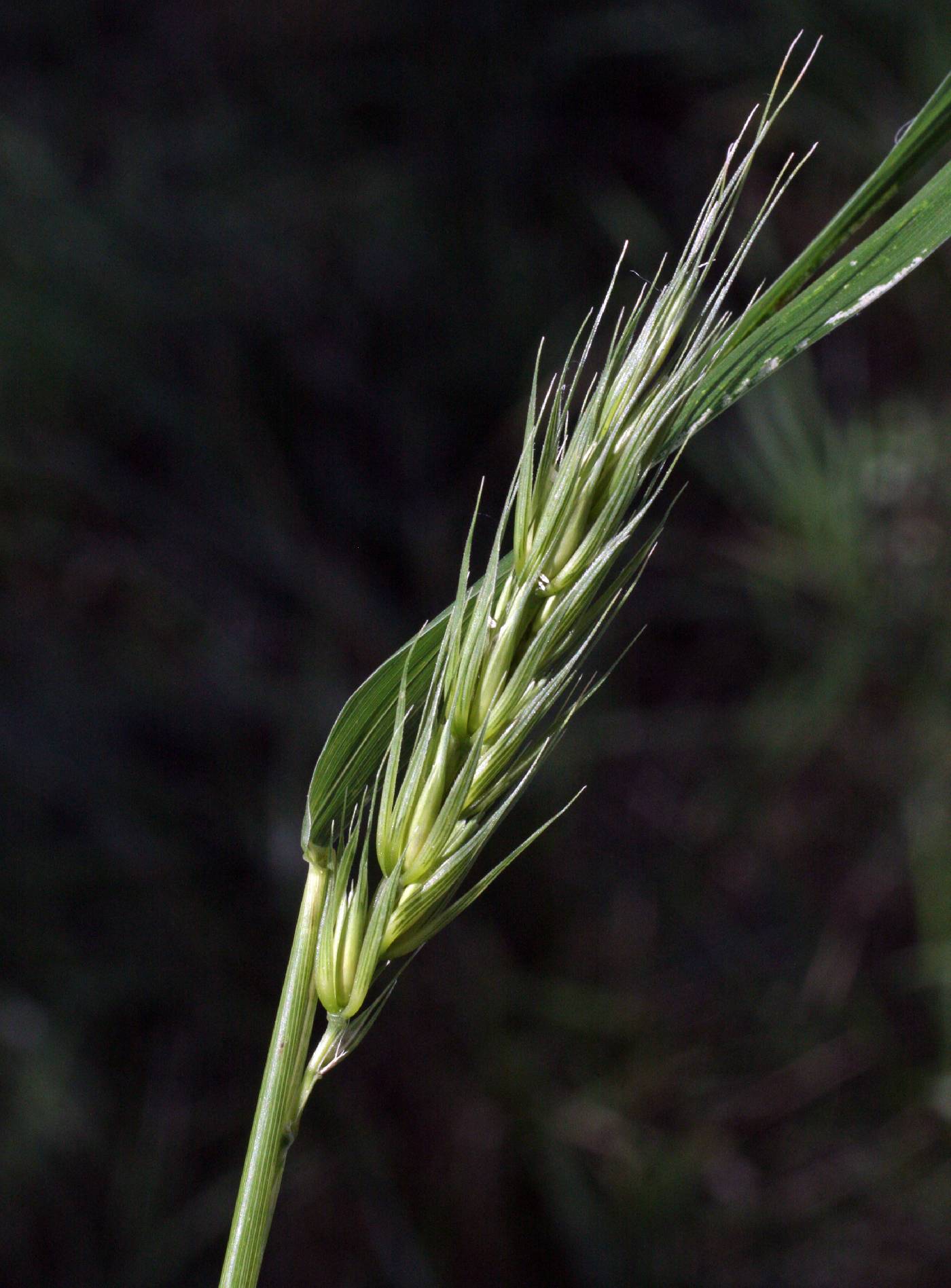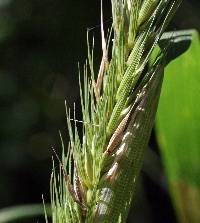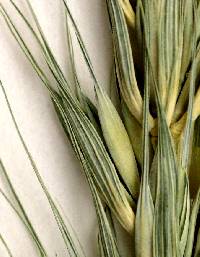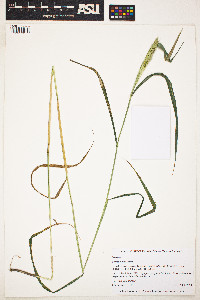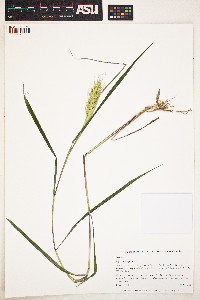|
|
|
|
Family: Poaceae
southeastern wildrye, more...Virginia wildrye, Virginia wildrye
[Elymus australis Scribn. & C.R.Ball, moreElymus glabriflorus (Vasey ex L.H.Dewey) Scribn. & C.R.Ball, Elymus glabriflorus var. australis (Scribn. & C.R.Ball) J.J.N.Campb., Elymus glabriflorus var. glabriflorus , Elymus halophilus E.P.Bicknell, Elymus hirsutiglumis Scribn., Elymus jejunus (Ramaley) Rydb., Elymus striatus Willd., Elymus virginicus f. australis (Scribn. & C.R.Ball) Fernald, Elymus virginicus var. australis (Scribn. & C.R.Ball) Hitchc., Elymus virginicus var. glabriflorus (Vasey ex L.H.Dewey) Bush, Elymus virginicus var. halophilus (E.P.Bicknell) Wiegand, Elymus virginicus var. hirsutiglumis (Scribn.) Hitchc., nom. superfl., Elymus virginicus var. intermedius (Vasey ex A.Gray) Bush, Elymus virginicus var. jejunus (Ramaley) Bush] |
Plants cespitose, not rhizomatous, often glaucous. Culms 60-140 cm, erect; nodes 6-9, mostly concealed, glabrous. Leaves evenly distributed; sheaths glabrous or pubescent, often reddish brown; auricles absent or to 2 mm, usually purplish brown; ligules shorter than 1 mm; blades 7-15 mm wide, lax or somewhat involute and ascending, usually dull green, sometimes with a glaucous bloom, adaxial surfaces glabrous or densely short-villous. Spikes 6-20 cm long, (2)2.5-4(5.5) cm wide, erect, exserted, with (10)18-30(36) nodes, usually with 2(3) spikelets per node, occasionally with up to 5 at some nodes; internodes 3-5 mm long, 0.3-0.8 mm thick and usually 4-angled at the thinnest sections, glabrous or pubescent beneath the spikelets. Spikelets 10-20 mm, strongly divergent, often reddish brown at maturity, with (2)3-5(6) florets, lowest florets functional; disarticulation below the glumes and each floret, or the lowest floret often falling with the glumes. Glumes equal or subequal, entire, the basal 1-3 mm terete, indurate, moderately bowed out, without evident venation, glume bodies 7-18 mm long, (0.7)0.9-1.7 mm wide, linear-lanceolate, widening above the base, (3)4-5(7)-veined, smooth or scabrous, sometimes hirsute, margins firm, awns (10)15-25(30) mm, straight except the awns of the lowest spikelets frequently contorted; lemmas 6-13 mm, smooth, scabrous, or hirsute, awns (15)25-35(40) mm, straight except the awns of the lowest spikelets occasionally contorted; paleas 6-12 mm, obtuse; anthers 2-4 mm. Anthesis usually mid-June to late July. 2n = 28. Elymus glabriflorus grows on moist, damp, or dry soil in open woods, thickets, and tall grasslands, sometimes spreading into old fields and roadsides. It is found in most of the southeastern United States , extending north to Iowa, Illinois, Indiana, West Virginia, and along the Atlantic coast to Maine; it is rare north of Maryland. Anthesis is usually 2-4 weeks later than in E. virginicus -and other sympatric taxa, even in Texas, where it occurs up to a month earlier than the dates given (Davies 1980). Elymus glabriflorus varies greatly in its pubescence, but without clear taxonomic relevance. Plants that combine pubescent spikelets and, usually, pubescent leaves with somewhat shorter spikes (6-12 cm versus 9-20 cm) and lemmas (6-10 mm versus 7-13 mm) are typical on relatively dry, infertile soils, especially in hilly interior regions, and are less frequent on the southeastern coastal plain. They have been named E. glabriflorus var. australis (Scribn. & C.R. Ball) J.J.N. Campb. -In contrast, glabrous to scabrous plants that are often more robust usually grow on relatively moist or damp soils of bottomlands and upland depressions. Elymus glabriflorus is most closely related to E. macgregorii -and E. virginicus, forming occasional hybrids with both (Campbell 2000). It is sometimes confused with E. villosus , from which it differs in having erect spikes, and glumes that are bowed out and disarticulate at maturity. It has also been confused with E. canadensis , especially E. canadensis var. robustus , which may be derived from introgressants between the two species (Davies 1980). Hybrids with E. hystrix -are also known, with apparent introgression at some range margins, but artificial crosses with other species failed in several cases (Church 1967a, 1967b). Tufted perennial 5-12 dm; lvs mostly 6-10 per stem, flat, 4-10 mm wide, scabrous on both sides; auricles to 1 mm, or wanting; spikes rigidly erect, 4-12(-16) cm, the base often included in the summit of the ±inflated uppermost sheath; spikelets mostly paired, 2-4(-5)-fld, disarticulating below the glumes; glumes subequal, 10-30 mm overall, firm, 0.8-2 mm wide, with a yellowish, cartilaginous, bowed-out base 1+ mm exposing the subtended florets, expanded above the base and tapering to the tip, flat and with 2-3 ciliolate veins abaxially, but swollen and uninerved for at least the basal half adaxially, usually ±long-awned, to 4 cm overall; lemmas small, 6-9 mm, glabrous to crisp-puberulent, scabrous and becoming 5-veined above the middle, usually with a long straight awn to 3.5 cm, but sometimes virtually awnless; larger paleas 6.5-8.5 mm, obtuse to truncate or slightly emarginate; anthers 1.5-3 mm; 2n=28. Moist woods, meadows, and prairies; Nf. to Alta., s. to Fla. and Ariz. Highly variable, and often divided into a number of ±sympatric, intergrading vars. or forms. A hybrid with Hordeum jubatum has been called lyhordeum montanense (Scribn.) Bowden. Gleason, Henry A. & Cronquist, Arthur J. 1991. Manual of vascular plants of northeastern United States and adjacent Canada. lxxv + 910 pp. ©The New York Botanical Garden. All rights reserved. Used by permission. |


